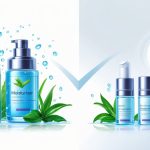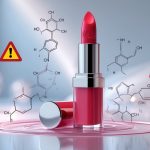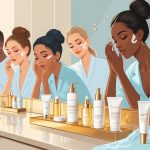Dermatologist-Backed Ingredients Suddenly Reshaping Daily Routines
Supporting the Skin Barrier With Peptides
Peptides. Sounds like gym bro stuff, right? But no, it’s just tiny protein bits that somehow convince your skin to patch itself up and stop leaking water. Dr. Sheth (he’s everywhere) says a peptide serum dropped dryness by 22% in eight weeks—night and morning, so, effort required. Don’t ask me to do the math, but that’s a lot for something you can get at Sephora.
After my embarrassing Zoom flakes, I swapped to a peptide cream—palmitoyl tripeptide-1, specifically. My jawline stopped feeling like sandpaper. Apparently, mixing peptides with niacinamide is the insider move. My last patch test didn’t sting, which is basically a miracle.
Tablets? I lose them. Topical peptides at 2–5% seem to do the trick, according to dermatologist routines. But, fun fact: peptides break down in light. My last open jar went weird after three weeks. So, airtight packaging—why is that a secret?
How Collagen and Elastin Enhance Elasticity
“Boost elasticity instantly!”—yeah, okay. My derm just shrugs. Topical collagen won’t erase deep wrinkles, but hydrolyzed versions might help with surface hydration. I tested an elastin serum on just one cheek (because, why not?) and by day five, that side bounced back faster. Scientists call it “recoil,” which makes me think of gym class.
No cream restarts your collagen factory. Collagen molecules are huge, elastin is unstable, and most of what you’re buying is hope. Supporting peptides or vitamin C might help—studies say vitamin C boosts collagen, but honestly, my humidifier did more for my bounce than any $80 cream.
Here’s something everyone skips: gentle, pH-balanced cleansers actually protect your collagen and elastin. Vogue says so, and every time I forget and use foaming cleanser, my cheeks get rough. Shower temp? Even lukewarm feels like sabotage on bad skin days.
Specialty Products: Eye Creams, Masks, and Toners
My bathroom shelf is a graveyard of bottles that promise miracles. One’s for puffiness, another for “free radicals,” and at least three have peptides I can’t pronounce. Dermatologists claim targeted products work, but sometimes it’s hype, sometimes it’s real, and sometimes I lose the spreadsheet that says which is which.
Benefits of Targeted Eye Creams
There’s always that one cold tube in my fridge (next to salsa, not sorry) that’s supposed to erase my “I watched Netflix till 2am” circles. Never seen my fine lines disappear, but caffeine seems to de-puff better than most creams. Dr. Shereene Idriss (she’s everywhere) likes hyaluronic acid, vitamin C, and low-dose retinol for eye stuff. It doesn’t reverse biology, but maybe it softens crow’s feet, or at least makes me feel proactive.
Ingredient roll call: hyaluronic acid for hydration, retinol for aging, vitamin C for brightening (if you squint). Start slow—thin skin, high risk. My cousin learned the hard way with a prescription retinoid. The top eye creams for 2025 usually have these, but not always.
I forget to tap, not rub (thin skin, remember?), and sometimes the only difference between “hydrated” and “puffy” is whether I ate too many salty snacks.
Face Masks for Instant Revitalization
Masks. Who has 30 minutes to sit still? Not me. Clay, sheet, overnight—I’ve tried them all. Dermatologists with actual credentials laugh at “detox in 10 minutes” claims, but they admit occlusive masks with niacinamide or glycerin can actually hydrate.
Every time I open a sheet mask and it drips everywhere, I wonder why I bother. Quick plump? Sometimes. It’s just humectants and silicones trapping water—nice for a selfie, gone by breakfast. Charcoal masks? Never cleared my blackheads, just made my face look gray in photos. Face masks with peptides exist, but honestly, if I skip masks for a week, nothing happens. Use one before a party, though, and makeup glides on—placebo or hydration, whatever.
Role of Toners in Balanced Care
Toners are a mess. I grew up with that blue alcohol stuff that turned my cheeks into sandpaper. Now, derms (the ones who actually publish, not just sell starter kits) say toners can balance pH, hydrate, or prep skin. If it’s alcohol-free and has glycerin, allantoin, or lactic acid, maybe it’s worth a shot.
Here’s the kicker: rosewater toner stung me, but my oily-skinned friend loved it. So, “universal benefit” is a myth. K-beauty toners? Some people swear by them, others break out. Data from 2024 says more people use toners to deliver actives—niacinamide, exfoliants, whatever—by dabbing, not splashing (less mess).
Honestly, if toner just makes your routine feel “done,” that’s fine. Measurable benefits? Totally depends on the formula and your skin. The best toners skip alcohol and add gentle hydrators, but your mileage may vary. Nobody in my group chat agrees whether toners matter at all.
Innovative Trends in Skincare Backed by Science
Thought I’d seen every serum, but no—dermatologist-backed skincare keeps flipping the script. Fermented extracts, skin cycling, microbiome everything—suddenly everyone’s obsessed and swears they see a difference. Do they? I have no clue. Some days, I think it’s all placebo. Other days, I’m googling “best probiotic serum” at midnight.
K-Beauty and Fermented Extracts
K-beauty is relentless. Serums, snail goo, glass bottles—honestly, it’s like skincare cosplay for chemists. I went to some expo once and, no joke, thought I’d wandered into a fermentation festival: lotus, rice, soy, all bubbling away in little jars. Are these people making sake or skincare? Dermatologists keep hyping fermented stuff, saying it’s “more bioavailable” because the molecules shrink. Dr. In-sik Hong, biochemist, dropped something about “enzymatic breakdown” and “increased absorption.” Sure, doc.
I caved and tried a fermented soybean essence. Smelled like a foot, but after three days, my cheeks weren’t as red. Placebo? Maybe. Science? Maybe. I mean, if K-beauty brands were all snake oil, wouldn’t they have gone bust by now? Ok-yun Kim, some skincare chemist, says these actives “boost antioxidants” (so, what, more radical scavenging? Sounds like a Marvel plot). Did my skin actually change? I guess? Less angry, didn’t go tomato-red at the gym, which never happens with just “clean” stuff. Still suspicious.
The Rise of Skin Cycling
Skin cycling. What even is this—face bootcamp? Three nights of acids, one night off with bland moisturizer. Dermatologists swear it “prevents over-exfoliation” and “lets the barrier recover,” whatever that means. Dr. Whitney Bowe apparently invented it. I can’t even fold laundry, but somehow, I manage to rotate my actives like a skincare DJ. Push, rest, repeat.
TikTok went wild for it in 2025—everyone showing off “buffer nights” and spreadsheets like it’s a science fair. I tried to keep track (wrote it down once, lost the paper, winged it anyway). Forgot a rest night, peeled like a croissant. Not perfect, but my skin’s less moody and friends keep bugging me for my “routine”—as if I have one.
Embracing the Skin Microbiome for Healthy Skin
Bacteria. On my face. That’s the new holy grail? I rolled my eyes at first, but then I found this 2024 JAMA Dermatology study—probiotic extracts helped over half of eczema sufferers chill out. Not a miracle, but hey, numbers. Dr. Mary Lupo keeps repeating “diversity is good”—like, for my pores?
Pharmacy shelves are now a bacteria buffet—prebiotic lotions, “barrier-building” creams. Miracle cure? Nope. Still break out if I inhale pizza. But my skin feels less cranky after using a lactobacillus ferment cream, and my friend’s perioral dermatitis? Weirdly better after two weeks of some symbiotic serum she said smelled like feet. The “skin bug” trend is everywhere now. I wish they’d at least warn you about the stink.



